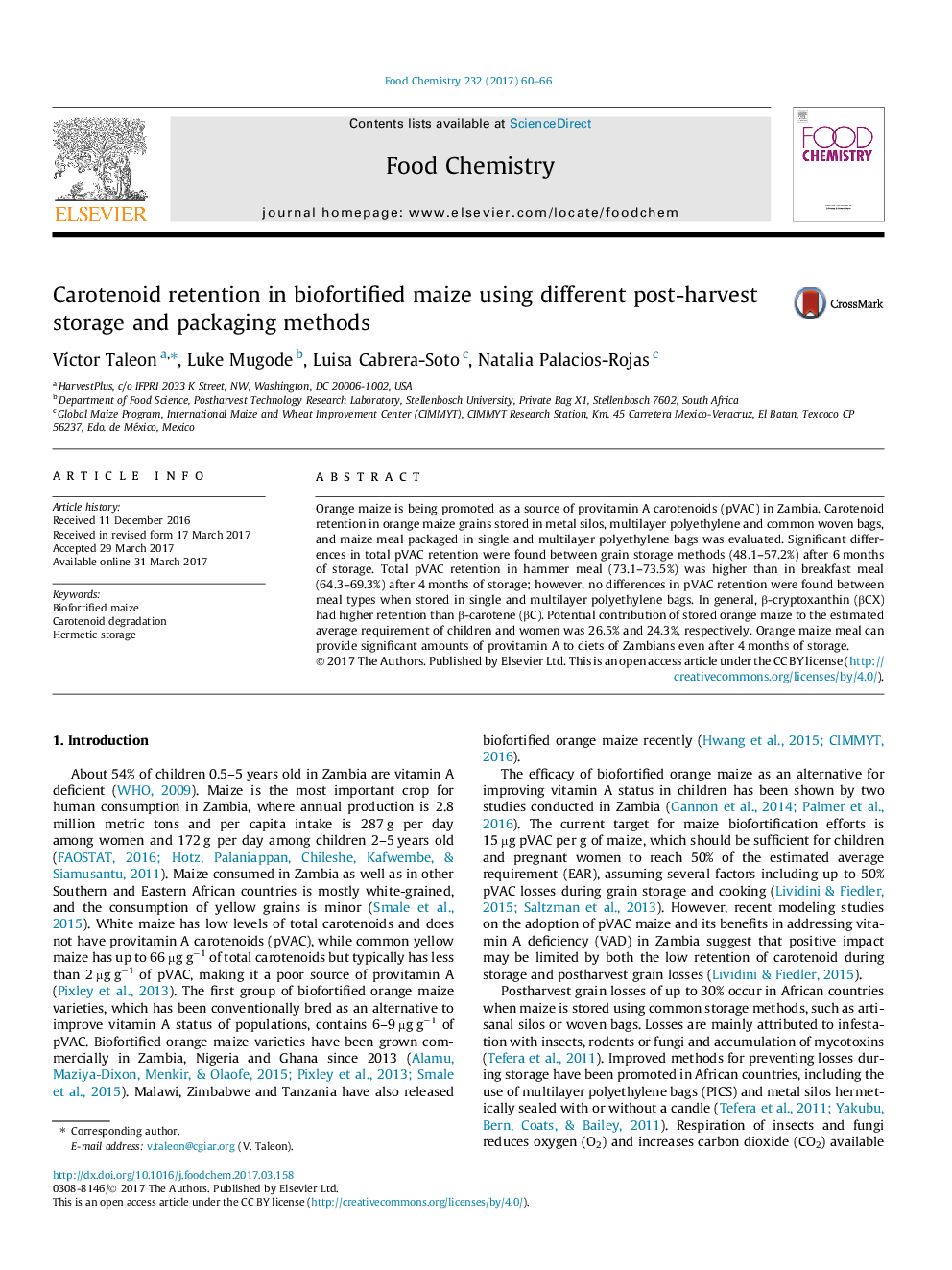| کد مقاله | کد نشریه | سال انتشار | مقاله انگلیسی | نسخه تمام متن |
|---|---|---|---|---|
| 5133386 | 1492060 | 2017 | 7 صفحه PDF | دانلود رایگان |

- Degradation rate of βCX was 51% lower than βC during storage of orange maize grain.
- Grain storage methods with 16% oxygen level reduced carotenoid degradation by 9.1%.
- Orange maize is an alternative to improve vitamin A status of deficient populations.
Orange maize is being promoted as a source of provitamin A carotenoids (pVAC) in Zambia. Carotenoid retention in orange maize grains stored in metal silos, multilayer polyethylene and common woven bags, and maize meal packaged in single and multilayer polyethylene bags was evaluated. Significant differences in total pVAC retention were found between grain storage methods (48.1-57.2%) after 6 months of storage. Total pVAC retention in hammer meal (73.1-73.5%) was higher than in breakfast meal (64.3-69.3%) after 4 months of storage; however, no differences in pVAC retention were found between meal types when stored in single and multilayer polyethylene bags. In general, β-cryptoxanthin (βCX) had higher retention than β-carotene (βC). Potential contribution of stored orange maize to the estimated average requirement of children and women was 26.5% and 24.3%, respectively. Orange maize meal can provide significant amounts of provitamin A to diets of Zambians even after 4 months of storage.
Journal: Food Chemistry - Volume 232, 1 October 2017, Pages 60-66